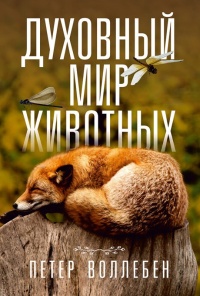Читать книгу "Приручение. 10 биологических видов, изменивших мир - Элис Робертс"
Шрифт:
Интервал:
Закладка:
Skoglund, P. et al. (2015), ‘Ancient wolf genome reveals an early divergence of domestic dog ancestors and admixture into high-latitude breeds’, Current Biology, 25: 1515–1519.
Thalmann, O. et al. (2013), ‘Complete mitochondrial genomes of ancient canids suggest a European origin of domestic dogs’, Science, 342: 871–874.
Trut, L. et al. (2009), ‘Animal evolution during domestication: the domesticated fox as a model’, Bioessays, 31: 349–360.
Пшеница
Allaby, R. G. (2015), ‘Barley domestication: the end of a central dogma?’, Genome Biology, 16: 176.
Brown, T. A. et al. (2008), ‘The complex origins of domesticated crops in the Fertile Crescent’, Trends in Ecology and Evolution, 24: 103–109.
Comai, L. (2005), ‘The advantages and disadvantages of being polyploid’, Nature Reviews Genetics, 6: 836–846.
Conneller, C. et al. (2013), ‘Substantial settlement in the European early Mesolithic: new research at Star Carr’, Antiquity, 86: 1004–1020.
Cunniff, J., Charles, M., Jones, G. & Osborne, C. P. (2010), ‘Was low atmospheric CO2 a limiting factor in the origin of agriculture?’, Environmental Archaeology, 15: 113–123.
Dickson, J. H. et al. (2000), ‘The omnivorous Tyrolean Iceman: colon contents (meat, cereals, pollen, moss and whipworm) and stable isotope analysis’, Phil. Trans. R. Soc. Lond. B, 355: 1843–1849.
Dietrich, O. et al. (2012), ‘The role of cult and feasting in the emergence of Neolithic communities. New evidence from Gobekli Tepe, south-eastern Turkey’, Antiquity, 86: 674–695.
Eitam, D. et al. (2015), ‘Experimental barley flour production in 12,500-year-old rock-cut mortars in south-western Asia’, PLOS ONE, 10: e0133306.
Fischer, A. (2003), ‘Exchange: artefacts, people and ideas on the move in Mesolithic Europe’, in Mesolithic on the Move, Larsson, L. et al. (eds) Oxbow Books, London.
Fuller, D. Q., Willcox, G. & Allaby, R. G. (2012), ‘Early agricultural pathways: moving outside the “core area” hypothesis in south-west Asia’, Journal of Experimental Botany, 63: 617–633.
Golan, G. et al. (2015), ‘Genetic evidence for differential selection of grain and embryo weight during wheat evolution under domestication’, Journal of Experimental Botany, 66: 5703–5711.
Killian, B. et al. (2007), ‘Molecular diversity at 18 loci in 321 wild and domesticate lines reveal no reduction of nucleotide diversity during Triticum monococcum (einkorn) domestication: implications for the origin of agriculture’, Molecular Biology and Evolution, 24: 2657–2668.
Maritime Archaeological Trust (Bouldnor Cliff): http://www.maritimearchaeologytrust.org/bouldnor
Momber, G. et al. (2011), ‘The Big Dig/Cover Story: Bouldnor Cliff’, British Archaeology, 121.
Pallen, M. (2015), ‘The story behind the paper: sedimentary DNA from a submerged site reveals wheat in the British Isles’ The Microbial Underground: https://blogs.warwick.ac.uk/microbialunderground/entry/the_story_ behind/
Zvelebil, M. (2006), ‘Mobility, contact and exchange in the Baltic Sea basin 6000–2000 BC’, Journal of Anthropological Archaeology, 25: 178–192.
Крупный рогатый скот
Ajmone-Marsan, P. et al. (2010), ‘On the origin of cattle: how aurochs became cattle and colonised the world’, Evolutionary Anthropology, 19: 148–157.
Greenfield, H. J. & Arnold, E. R. (2015), ‘“Go(a)t milk?” New perspectives on the zooarchaeological evidence for the earliest intensification of dairying in south-eastern Europe’, World Archaeology, 47: 792–818.
Manning, K. et al. (2015), ‘Size reduction in early European domestic cattle relates to intensification of Neolithic herding strategies’, PLOS ONE, 10: e0141873.
Meadows, W. C. (ed.), Through Indian Sign Language: The Fort Sill Ledgers of Hugh Lenox Scott and Iseeo, 1889–1897, University of Oklahoma Press, Oklahoma 2015.
Prummel, W. & Niekus, M. J. L. Th (2011), ‘Late Mesolithic hunting of a small female aurochs in the valley of the River Tjonger (the Netherlands) in the light of Mesolithic aurochs hunting in NW Europe’, Journal of Archaeological Science, 38: 1456–1467.
Roberts, Gordon: http://formby-footprints.co.uk/index.html
Salque, M. et al. (2013), ‘Earliest evidence for cheese-making in the sixth millennium BC in northern Europe’, Nature, 493: 522–525.
Singer, M.-H.S. & Gilbert, M. T. P. (2016), ‘The draft genome of extinct European aurochs and its implications for de-extinction’, Open Quaternary, 2: 1–9.
Taberlet, P. et al. (2011), ‘Conservation genetics of cattle, sheep and goats’, Comptes Rendus Biologies, 334: 247–254.
Upadhyay, M. R. et al. (2017), ‘Genetic origin, admixture and populations history of aurochs (Bos primigenius) and primitive European cattle’, Heredity, 118: 169–176.
Warinner, C. et al. (2014), ‘Direct evidence of milk consumption from ancient human dental calculus’, Scientific Reports, 4: 7104.
Кукуруза
Brandolini, A. & Brandolini, A. (2009), ‘Maize introduction, evolution and diffusion in Italy’, Maydica, 54: 233–242.
Desjardins, A. E. & McCarthy, S. A. (2004), ‘Milho, makka and yu mai: early journeys of Zea mays to Asia’: http://www.nal.usda.gov/research/maize/index.shtml
Doebley, J. (2004), ‘The genetics of maize evolution’, Annual Reviews of Genetics, 38: 37–59.
Gerard, J. & Johnson, T. (1633), The Herball or Generall Historie of Plantes, translated by Ollivander, H. & Thomas, H., Velluminous Press, London 2008.
Jones, E. (2006), ‘The Matthew of Bristol and the financiers of John Cabot’s 1497 voyage to North America’, English Historical Review, 121: 778–795.
Jones, E. T. (2008), ‘Alwyn Ruddock: “John Cabot and the Discovery of America”’, Historical Research, 81: 224–254.
Matsuoka, Y. et al. (2002), ‘A single domestication for maize shown by multilocus microsatellite genotyping’, PNAS, 99: 6080–6084.
Mir, C. et al. (2013), ‘Out of America: tracing the genetic footprints of the global diffusion of maize’, Theoretical and Applied Genetics, 126: 2671–2682.
Piperno, D. R. et al. (2009), ‘Starch grain and phytolith evidence for early ninth millennium BP maize from the Central Balsas River Valley, Mexico’, PNAS, 106: 5019–5024.
Piperno, D. R. (2015), ‘Teosinte before domestication: experimental study of growth and phenotypic variability in late Pleistocene and early Holocene environments’, Quaternary International, 363: 65–77.
Rebourg, C. et al. (2003), ‘Maize introduction into Europe: the history reviewed in the light of molecular data’, Theoretical and Applied Genetics, 106: 895–903.
Tenaillon, M. I. & Charcosset, A. (2011), ‘A European perspective on maize history’, Comptes Rendus Biologies, 334: 221–228.
Внимание!
Сайт сохраняет куки вашего браузера. Вы сможете в любой момент сделать закладку и продолжить прочтение книги «Приручение. 10 биологических видов, изменивших мир - Элис Робертс», после закрытия браузера.




